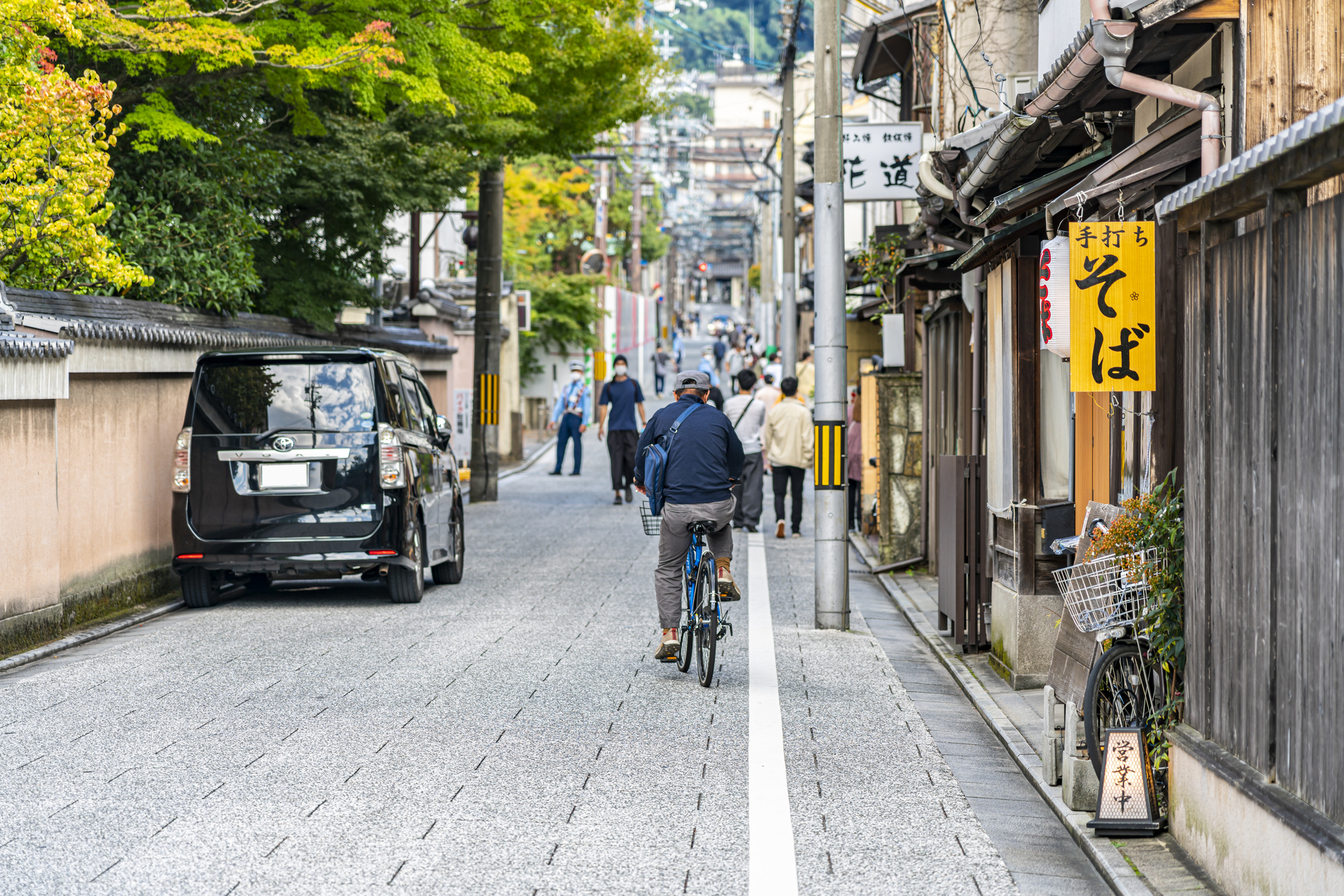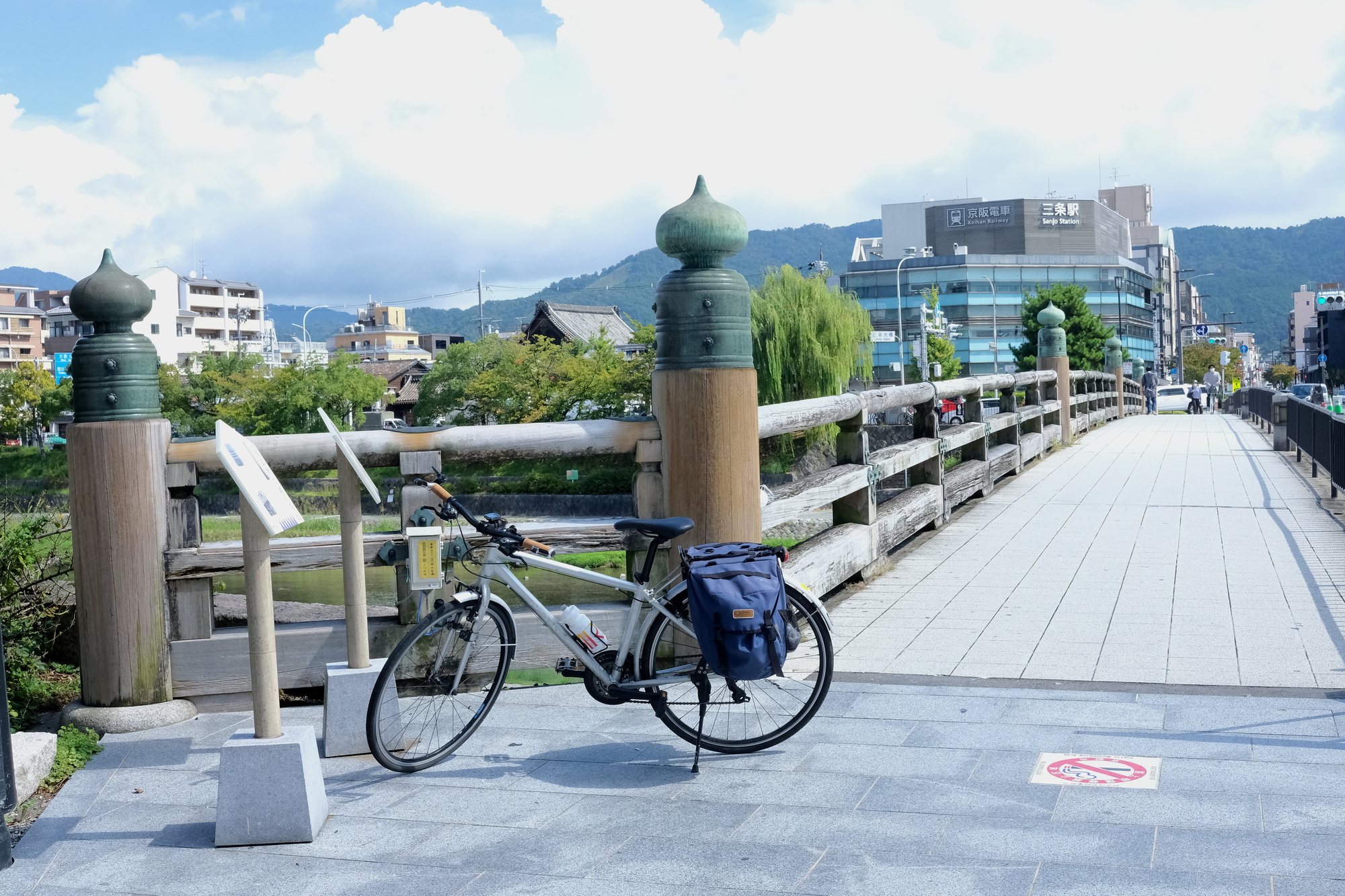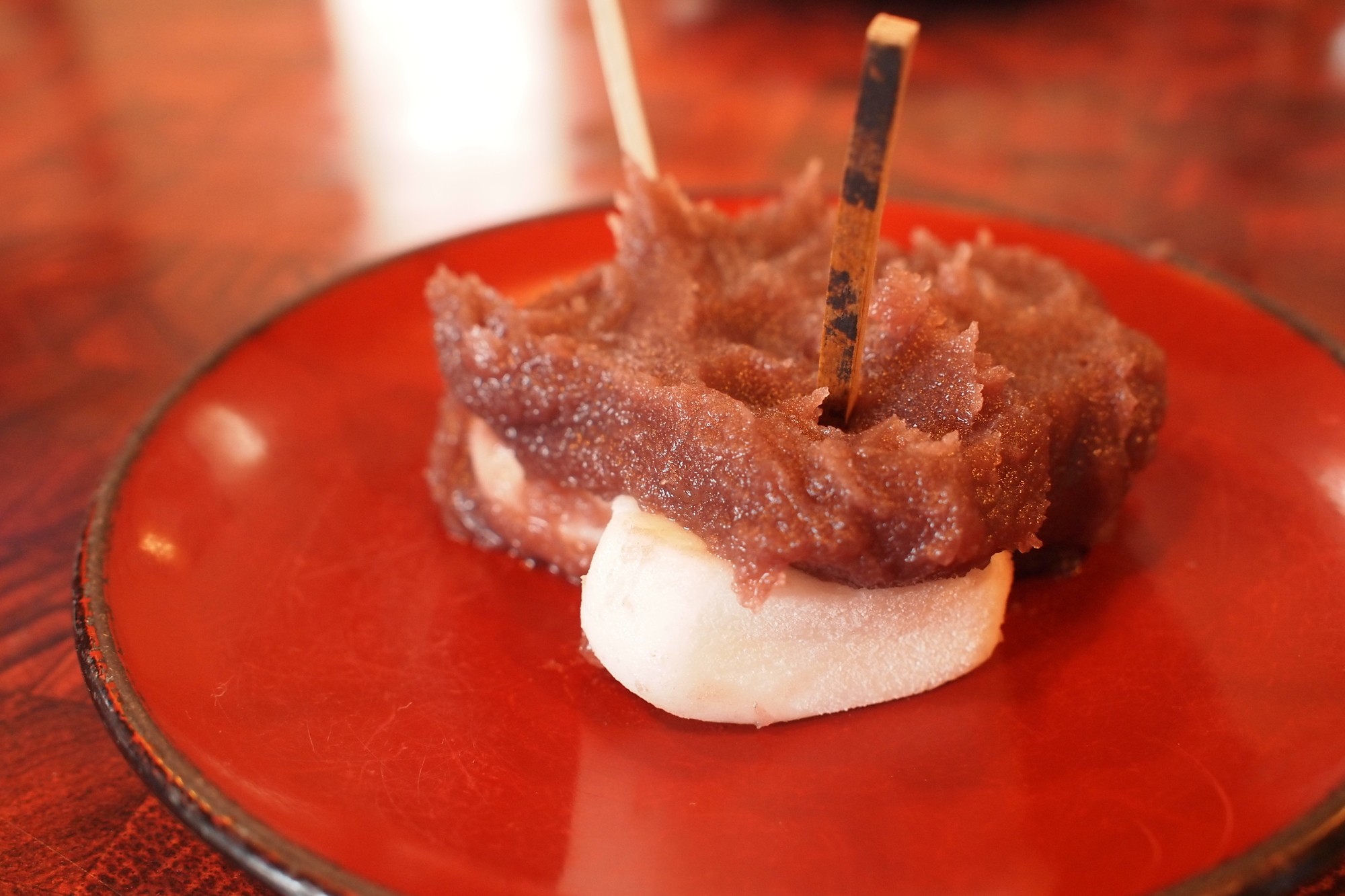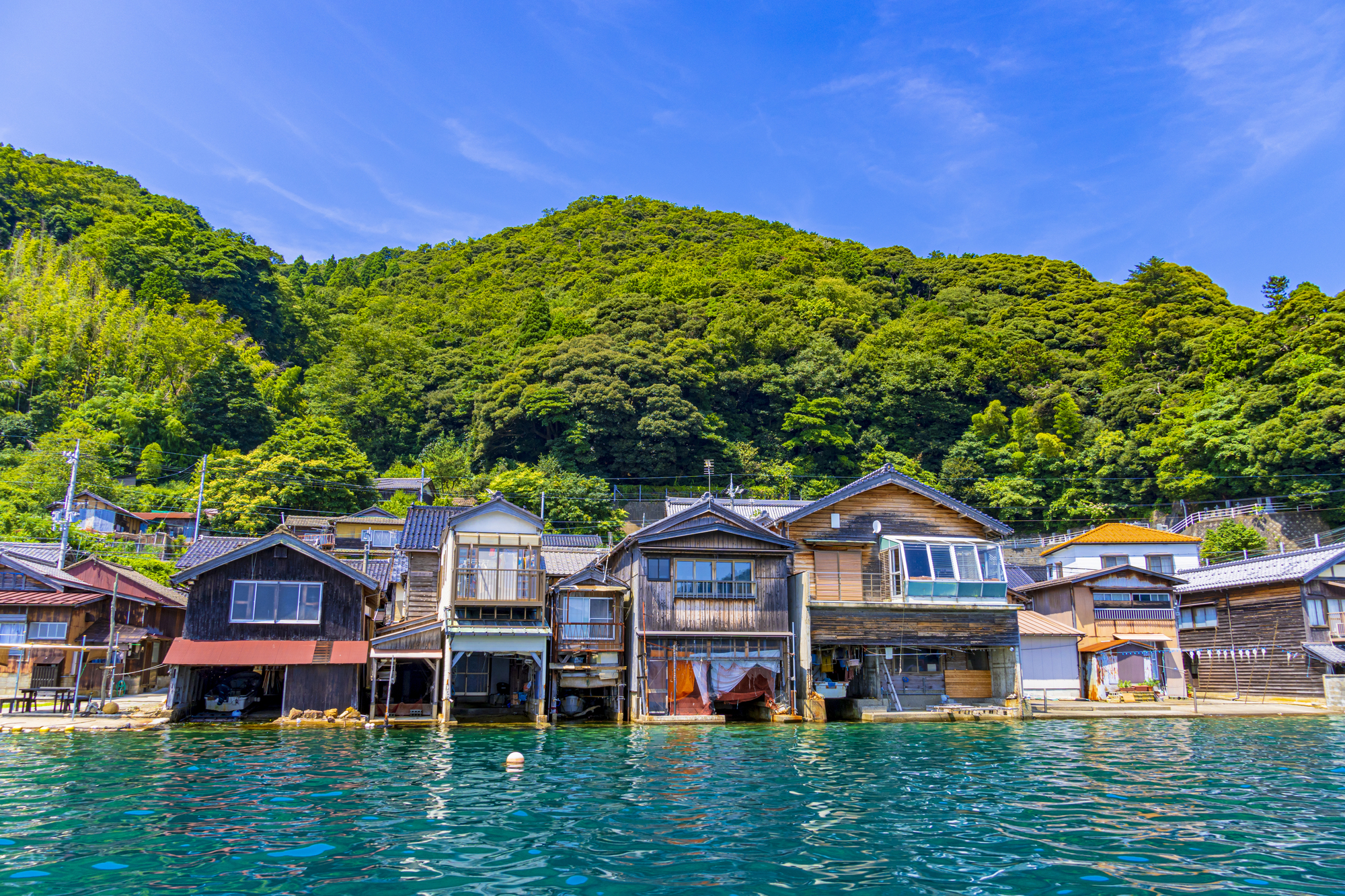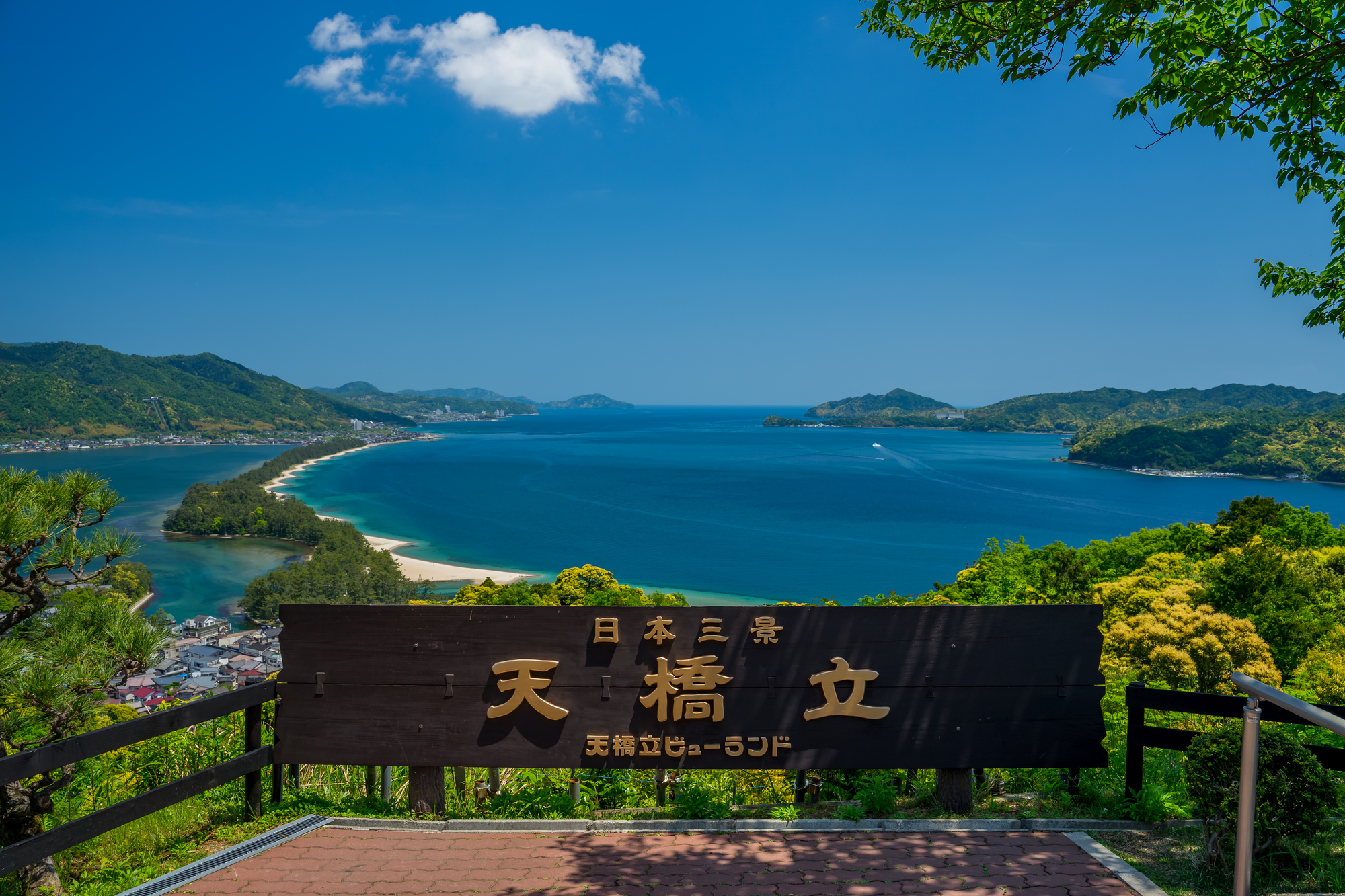Chion-ji Temple in Amanohashidate
Touring Chion-ji Temple in Amanohashidate | Complete Guide to Monju Wisdom Power Spots
Located about a 5-minute walk from Amanohashidate, Chion-ji Temple is a famous temple counted as one of
“Japan’s Three Great Monju Temples”,
along with Abe Monju-in in Nara and Kameoka Monju in Yamagata.
The temple enshrines Monju Bosatsu, known from the saying “Three heads together make the wisdom of Monju,” and is visited by worshippers from all over Japan as apower spot for success in entrance exams and academic achievement.
According to the ancient legend “Kuse no Engi” preserved at Chion-ji, when the land of Japan was being formed, Izanagi and Izanami invited Monju Bosatsu from Mount Wutai in China to subdue an evil dragon—
a grand myth passed down through the ages.
1. Main Gate | A Majestic Entrance Also Known as the Golden Pavilion

Walk down the teahouse-lined street and you’ll come to Chion-ji’s grand Sanmon Gate, whose imposing presence serves as the symbolic entrance to the temple.
When the gate was rebuilt, gold was bestowed by Empress Gosakuramachi, and since then it has also been called the “Golden Pavilion.”
Built in the Zen architectural style, this gate is one of the largest of its kind in the Tango region. It is said that construction took seven years, completed in the fourth year of the Meiwa era, and involved an astonishing 8,780 carpenters—a truly monumental structure.
2. Tahoto Pagoda | A Valuable Cultural Property from the Muromachi Period
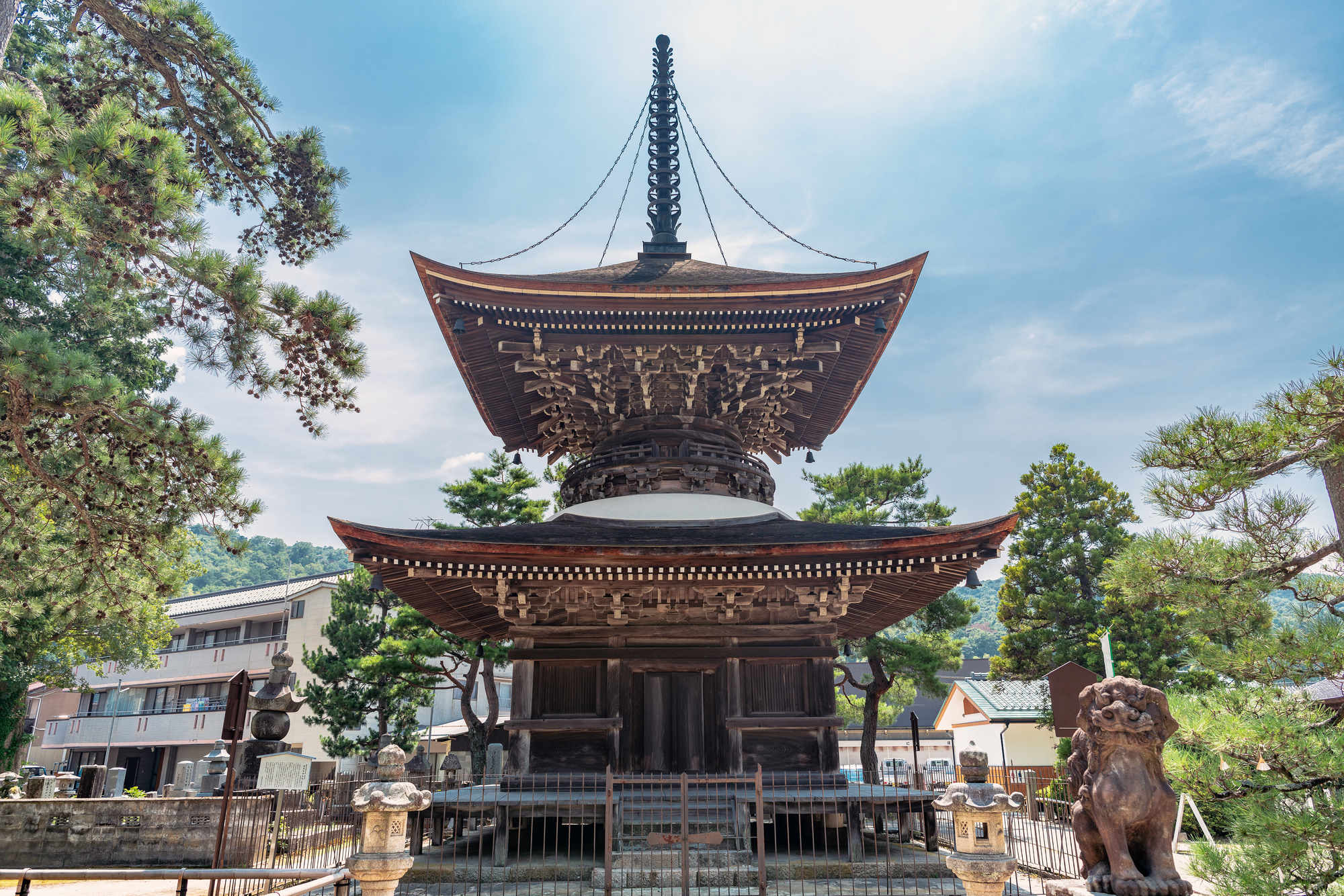
Passing through the main gate and entering the precincts, you’ll see the Tahoto Pagoda on your left, built in the ninth year of the Meio era during the Muromachi period.
It is said to have been erected by the lord of Fuchu Castle in gratitude for recovery from illness, and it is designated an Important Cultural Property as the only remaining Muromachi-period structure in the Tango region.
Facing the pagoda are rows of life-sized stone Buddhas, also depicted in Sesshu’s famous “Amanohashidate Landscape.” From the staff in their right hands and the wish-fulfilling jewel in their left, we know that these figures represent Jizo Bosatsu.
3. Chikara-ishi (Power Stones) | Stones Said to Grant Strength and Wisdom
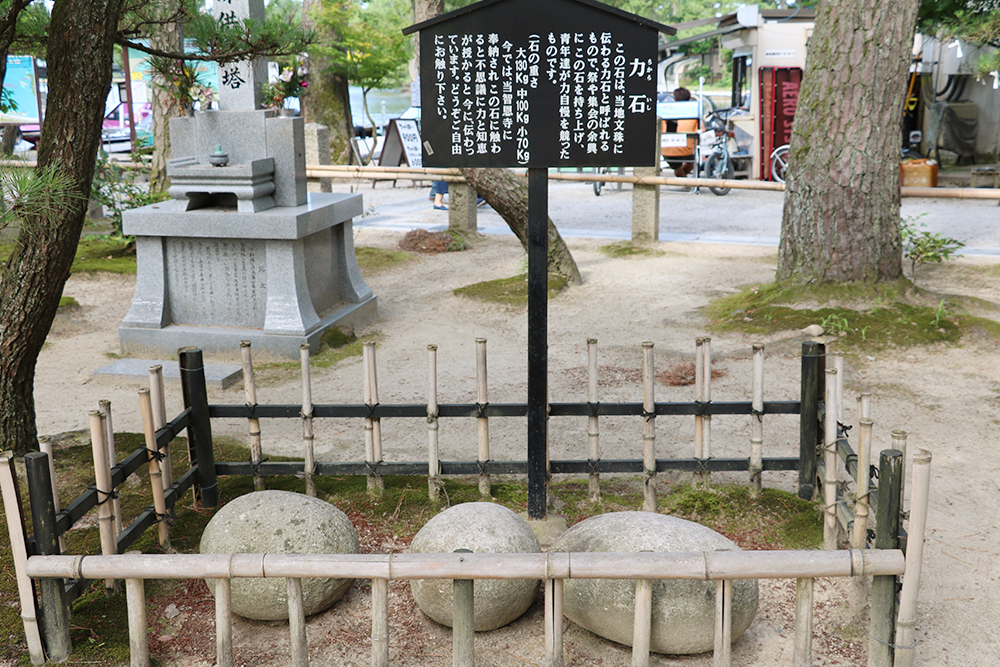
Lined up in a row are three Chikara-ishi, or power stones (large, medium, and small), once used in strength contests by young men during temple festivals.
Their weights are truly impressive: 130 kg for the large stone, 100 kg for the medium, and 70 kg for the small.
Legend says that simply touching them will grant you strength and wisdom, so even if you can’t lift them, be sure to lay a hand on them for good luck.
4. Iron Bath (Chozubachi) | A Kamakura-Period Bath Reborn as a Purification Basin
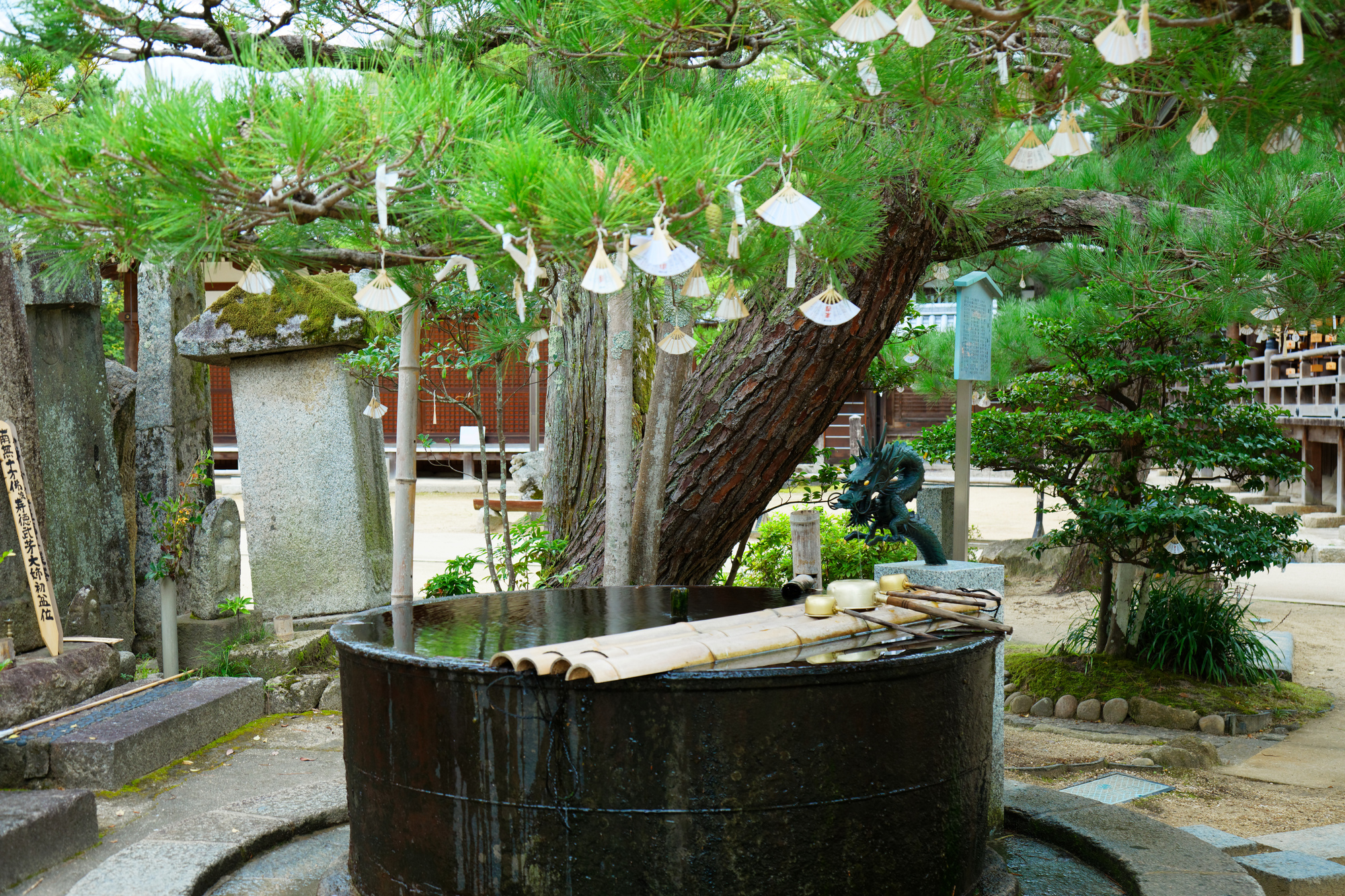
In front of the main hall stands the Iron Bath (Chozubachi), originally made as a bath during the Kamakura period.
It is said to have once been used in the temple’s large bathhouse for monks to bathe, and today it has been passed down as a basin for visitors to purify themselves before worship.
Once you have completed the ritual cleansing, it’s time to head to the heart of Chion-ji Temple, the Monju-do Hall.
5. Monju-do Hall | Main Hall Enshrining the Hidden Statue of Monju Bosatsu

The main hall where Monju Bosatsu, known as the deity of learning and wisdom, is enshrined is called the Monju-do.
The image of Monju Bosatsu is a hidden Buddha and is not ordinarily on public display; it is revealed only on five special days each year.
▷ New Year’s Days (January 1–3)
▷ January 10 (Toka Ebisu Festival)
▷ July 24 (Departure Festival)
If you time your visit with one of these dates, you may be fortunate enough to witness the rare unveiling of Monju’s image.
6. Shoro-mon (Kyo-un-kaku) | A Beautiful Bell Tower Gate in Ryugu Style
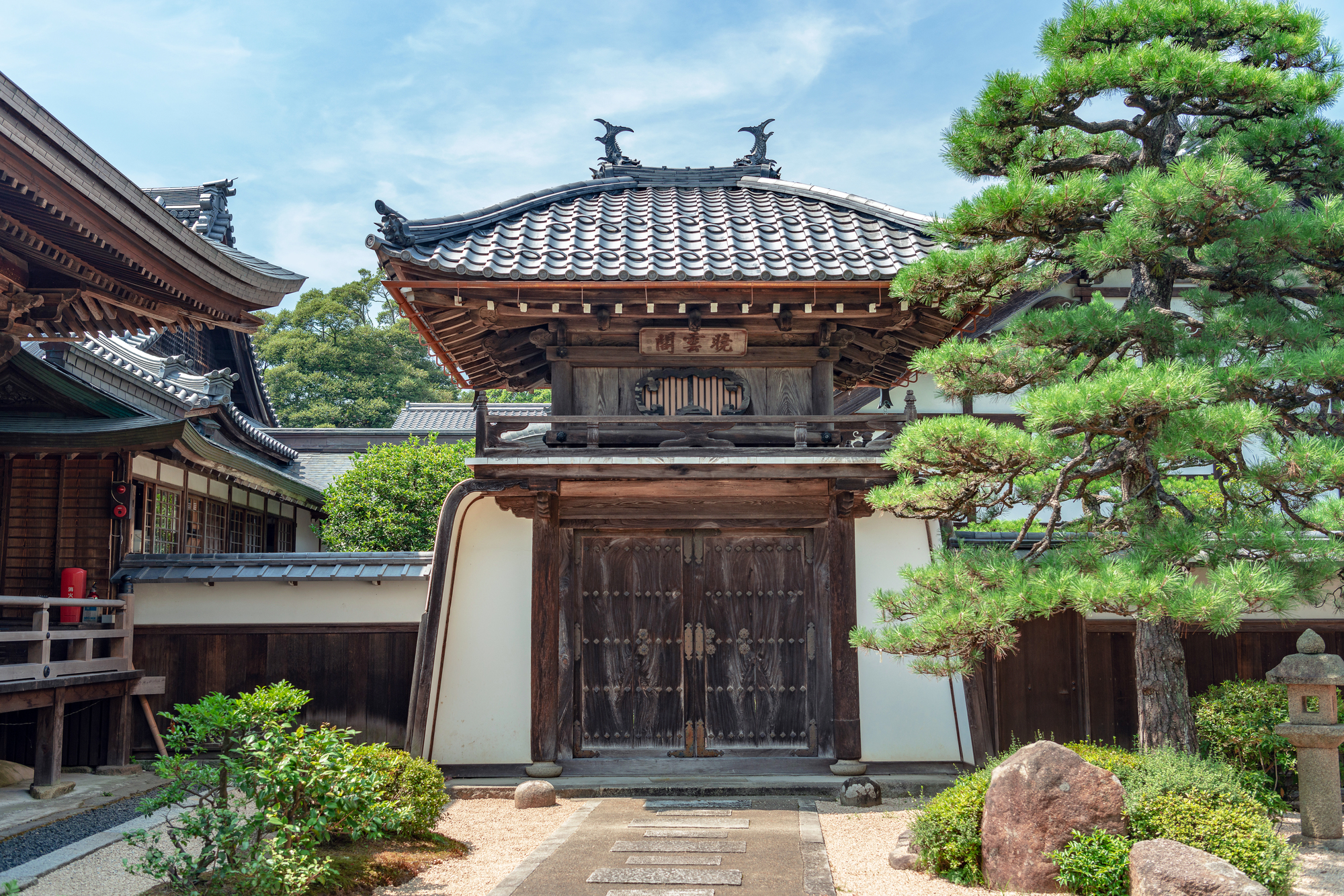
Standing beside the Monju-do is the Shoro-mon (Kyo-un-kaku), a bell tower gate built in 1722 by Masahide Kimura, a merchant from Miyazu.
It is said that the name derives from the posthumous Buddhist names of his two deceased children. The structure is notable for its elegant Ryugu-style gate, with turtle-shaped bases on both sides of the lower level.
With its appearance reminiscent of the Dragon Palace from Japanese folklore, this graceful gate fascinates all who visit.
7. Monju Tree | Sacred Tree That Blesses Those Who Adorn Their Lives with Wisdom

On the way from the main hall toward the sightseeing boat pier, you’ll find the sacred Monju Tree.
The character for “Mon” here can also mean “to adorn,” and it is said that
“good fortune comes to those who adorn their lives with wisdom.”
The sap of the Monju Tree is believed to emit spiritual energy and is said to be used in making high-quality incense—yet another reason this great tree is regarded as sacred.
8. Suehiro Folding-Fan Omikuji | Fan-Shaped Fortunes That Bloom Like Flowers
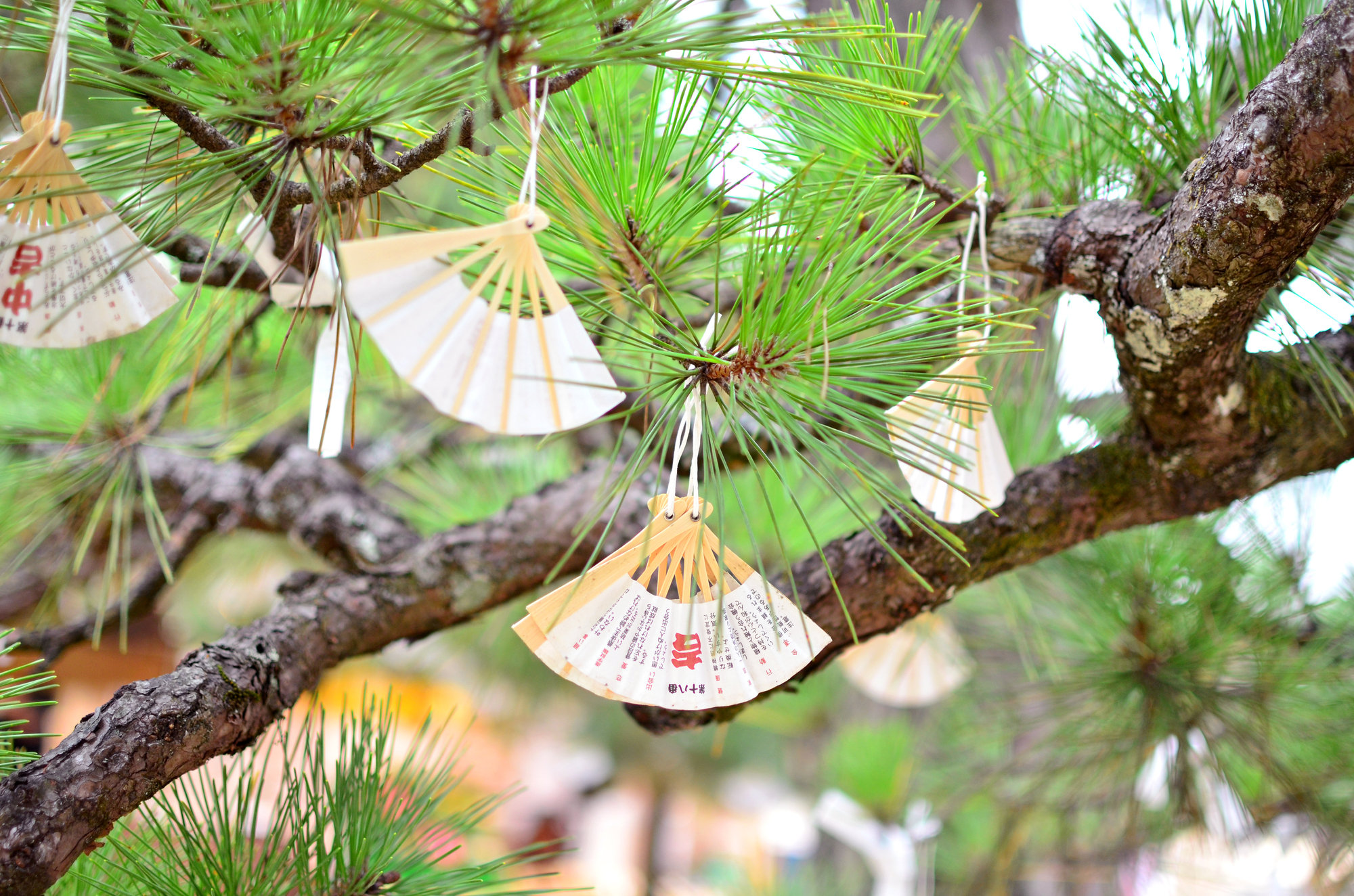
Among the many kinds of fortunes available, one of the most popular is the Suehiro Folding-Fan Omikuji.
The fans tied to the pine trees around the precincts bloom like colorful flowers,
creating a delightful sight for visitors.
It’s a unique style in which you open the folding fan to reveal your fortune. You may feel tempted to take it home as a keepsake, but the custom is to tie it within the temple grounds.
As a final touch to your visit, why not “make a fan flower bloom” by tying your own omikuji fan?
9. Chie-no-wa Lantern | Pass Through Three Times to Gain the Wisdom of Monju?

The last spot to visit is the Chie-no-wa Lantern, located near the boat landing on the north side of Chion-ji Temple.
This stone lantern was originally built to pray for the safety of boats at sea, but today it is known for the legend:
“Pass through it three times and you will receive the wisdom of Monju.”
However, it is said that you must not pass through with your whole body. So the question is: how will you “go through” it?
“Three heads together make the wisdom of Monju”—perhaps if you think it over with your companions, you’ll find the answer together.
- Contact
- 智恩寺
- TEL
- 0772-22-2553
- Address
- 〒626-0001 京都府宮津市文珠466
- Website
- http://www.monjudo-chionji.jp/
- Distance from the Facility
- 車で22分
![Chion-ji Temple in Amanohashidate、Auberge Villa offers the finest cuisine in a private villa that can be rented out freely. [Best Rate Guarantee]](https://en.auberge-soso.com/wp-content/themes/hoshioto2020/images/common/logo_blk.svg)
